A well-maintained lawn is often the first thing people notice when they approach home, making curb appeal a key factor in creating a great first impression. Synthetic turf is becoming an increasingly popular option for homeowners looking to enhance the appearance of their property while avoiding the hassle of traditional lawn care. With its lush, green look year-round, artificial grass instantly boosts curb appeal and creates a clean, polished outdoor space.
Beyond aesthetics, synthetic turf can also increase property value by offering a low-maintenance, durable, and eco-friendly alternative to natural grass. In this blog, we’ll explore how synthetic turf installation can make your home more attractive to potential buyers and improve its marketability.
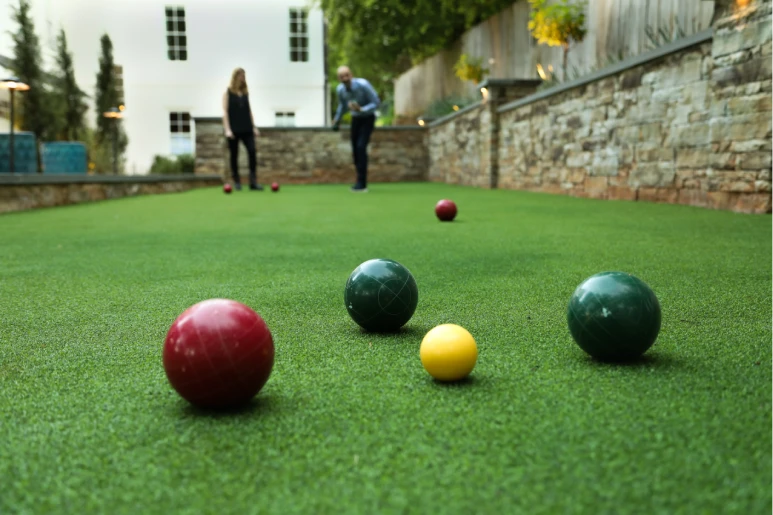
Advantages of Synthetic Turf Installation
- Low Maintenance
One of the biggest reasons homeowners choose synthetic turf is the minimal upkeep. There’s no need to mow, water, or fertilize your lawn. This means less time spent on yard work and more time enjoying your outdoor space. It also saves money on lawn care services, equipment, and utilities like water.
- Always Looks Great
Synthetic turf installation in Atlanta stays green and lush throughout the year, regardless of weather. Whether it’s the peak of summer or the middle of winter, your lawn will look picture-perfect. It isn’t affected by drought, excessive rain, or seasonal changes like natural grass does.
- Durability
Artificial grass is rugged and built to last. It can handle heavy foot traffic, pets running around, and children playing without showing signs of wear. Because it’s designed to withstand all kinds of use and weather conditions, it stays in good shape for years.
- Water Conservation
Synthetic turf doesn’t need to be watered, which is a considerable advantage, especially in areas prone to drought or water restrictions. This conserves a valuable resource and cuts down on your water bill. It’s an eco-friendly choice that reduces water consumption.
- Pest-Free Lawn
Without natural grass, there’s no need to worry about pests like bugs, insects, or rodents often attracted to natural lawns. Synthetic turf doesn’t provide the same habitat for pests, which means fewer problems with lawn damage or infestations.
- No Chemicals Needed
Synthetic turf does not require fertilizers, pesticides, or herbicides to maintain. This makes it safer for households with children and pets and better for the environment, as chemicals are not introduced into the soil or water supply.
- Safe for Kids and Pets
Artificial turf is soft, non-toxic, and cushioned, making it a great surface for kids and pets to play on. Many synthetic lawns are designed with extra padding underneath to provide shock absorption, reducing the risk of injury from falls.
- Boosts Curb Appeal
A well-manicured lawn can instantly enhance the overall appearance of your home. Synthetic turf adds to curb appeal by offering a clean, polished look without the hassle of constant upkeep. This makes your home more attractive to visitors, neighbors, and potential buyers.
- Long-Term Investment
While the initial cost of installing synthetic turf can be higher than maintaining natural grass, the long-term savings make it a worthwhile investment. Over time, the savings from reduced water usage, maintenance, and lawn care services can more than make up for the upfront expense.
- Versatility
Synthetic turf can be used beyond traditional lawns, including rooftop gardens, patios, play areas, and pools. Its versatility allows for creative landscaping options that suit different properties and lifestyles.
Choosing the Right Synthetic Turf
When selecting synthetic turf for your home, you must choose based on your specific needs and preferences. Here are some key factors to consider:
- Purpose of the Turf
First, think about how you plan to use the synthetic turf. Are you installing it for a backyard lawn, a pet-friendly area, a play space for kids, or a decorative garden? Different types of turf are designed for different uses. For example, pet-friendly turf is made to be durable and easy to clean, while turf for playgrounds often has extra padding for safety.
- Quality and Durability
Synthetic lawns come in various quality levels. Higher-quality turf is more durable and tends to look more natural. It’s important to invest in good-quality turf, especially if it will be exposed to heavy foot traffic or weather elements. Check for things like UV resistance, which helps prevent sun fading, and the turf’s density, which affects its durability.
- Pile Height
Pile height refers to the length of the grass blades. Shorter pile heights (around 20-30mm) are often used for decorative purposes or in areas with low foot traffic. Taller pile heights (35-45mm) give a more lush and natural look, making them great for front lawns or areas where appearance is essential.
- Infill Options
Infill is the material spread between synthetic grass blades to help the turf stand upright and provide cushioning. Options include rubber, sand, or a mix of both. Rubber provides a softer, cushioned feel, which is good for play areas, while sand offers more stability for high-traffic areas.
- Drainage Capability
Good drainage is essential for synthetic turf, especially in areas prone to heavy rain or if pets will be using the turf. Ensure your turf has a proper drainage system to prevent puddling and ensure quick drying after rain or cleaning.
- Budget
Prices for synthetic turf can vary based on quality, brand, and installation costs. Higher-end products are more durable and realistic but have a higher price tag. Make sure to balance your budget with the quality of the turf, especially if it’s a long-term investment for your property.
Understanding the Cost of Synthetic Grass Installation
Understanding the costs involved is important for planning and budgeting when considering synthetic grass for your home. Several factors influence the total installation cost, and knowing what to expect can help you make an informed decision.
- Turf Quality
The quality of synthetic grass plays a major role in determining the cost. Higher-quality turf looks more natural, is more durable, and can last longer, but comes with a higher price tag. Cheaper options may be less durable and realistic, making them more suitable for short-term projects or areas with less foot traffic. High-end synthetic grass is designed to resist UV fading, withstand heavy use, and feel soft underfoot.
- Size of the Area
The larger the installation area, the higher the overall cost. Synthetic turf is typically sold by square foot, so the more square footage you need, the more materials you’ll have to buy. This means the total cost can range significantly depending on the yard size or area being covered.
- Site Preparation
Preparing the site for synthetic turf installation is a critical step that affects the total cost. This includes removing grass or debris, leveling the ground, and ensuring proper drainage. You may face additional labor costs if your yard requires significant leveling or special grading. In some cases, rocks, roots, or other obstacles may need to be removed, further increasing preparation expenses.
- Base Materials
A base material such as crushed rock or gravel is laid beneath the synthetic grass to ensure proper installation. This base provides a stable foundation and helps with drainage. The cost of the base material can vary depending on the size of the area and the depth required for installation.
- Labor Costs
Labor is another critical cost factor in synthetic turf installation. Professional installation ensures that the turf is laid evenly and appropriately secured and that the seams are invisible. Labor costs can vary depending on the project’s complexity, the company you hire, and your location. While DIY installation can save money on labor, professional installation typically guarantees better results and longer-lasting turf.
- Additional Features
These can increase the overall cost if you want to add extras like edging, infill materials, or special underlay for added cushioning. Some installations may also require drainage solutions or weed barriers, which can add to the final price. If you’re installing synthetic turf in a pet or play area, you may need special features like odor-absorbing infill or added padding, which can also drive up the cost.
- Average Cost Range
On average, synthetic grass installation costs range from $5 to $20 per square foot, depending on the abovementioned factors. For a typical backyard installation, homeowners can expect to spend anywhere from $3,000 to $10,000 or more, depending on the yard’s size, the turf’s quality, and the installation’s complexity.
Conclusion
Incorporating synthetic turf into your outdoor space offers many benefits beyond aesthetics. From its low-maintenance nature to its ability to withstand varying weather conditions, artificial grass presents an attractive alternative to traditional lawns. As we’ve explored, synthetic turf enhances curb appeal, making your home more inviting and potentially increasing its market value.
Are you looking for professional turf installers near you? Look no further than Outdoor Makeover & Living Spaces. Hiring us means access to our team’s years of experience designing and installing premium-quality greens. Contact us today!

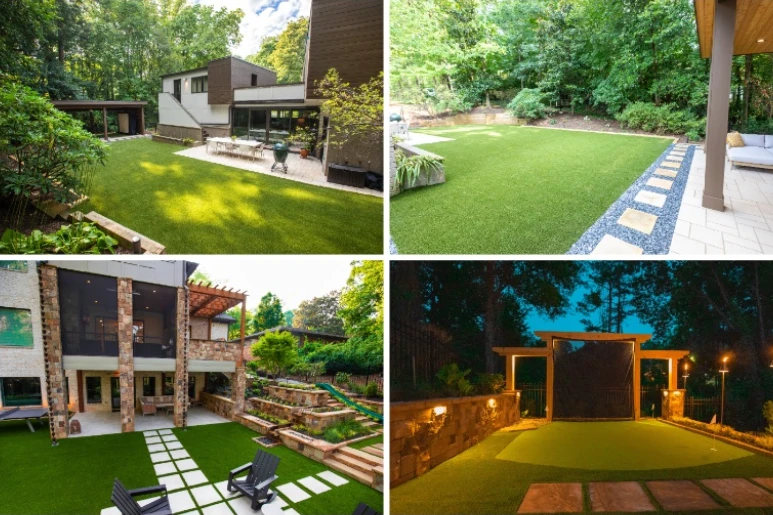
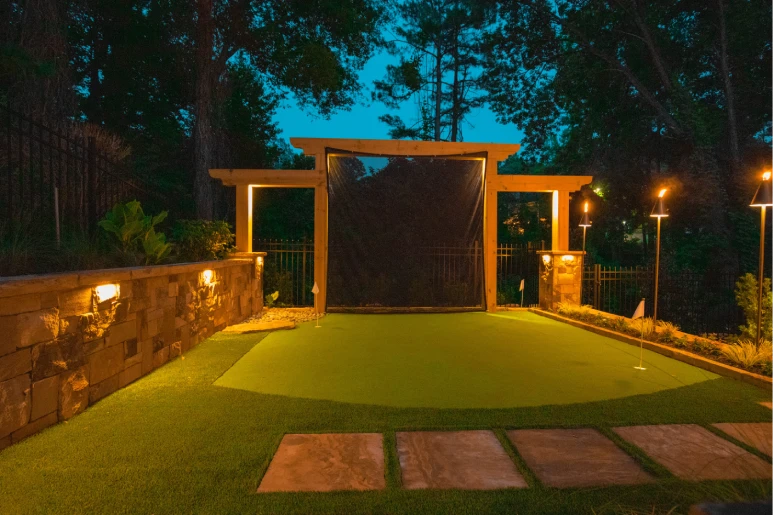
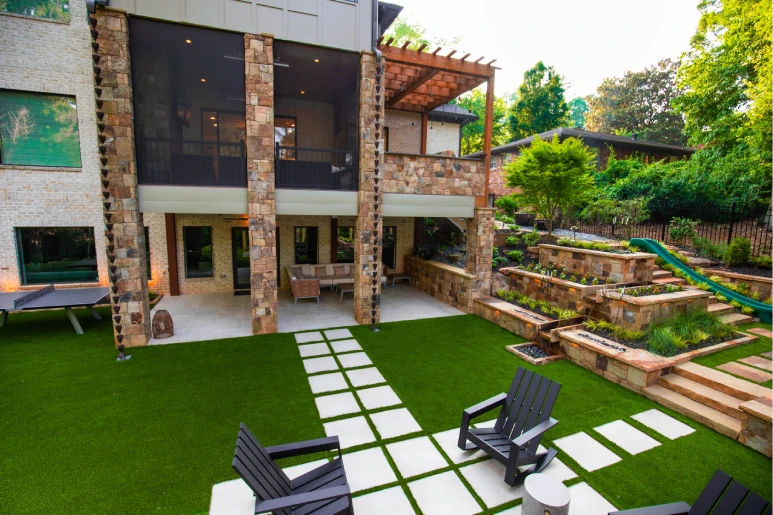
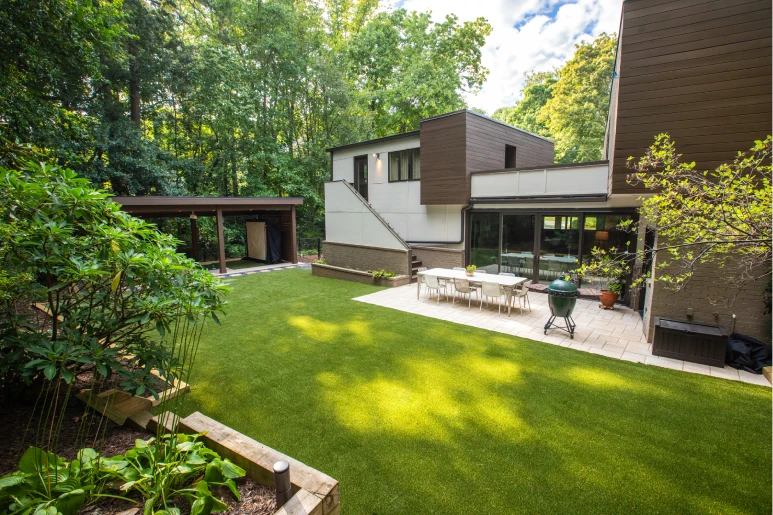
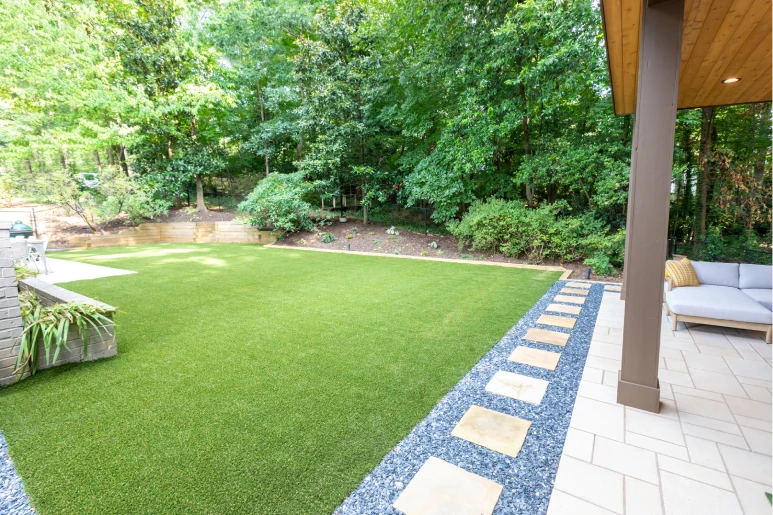
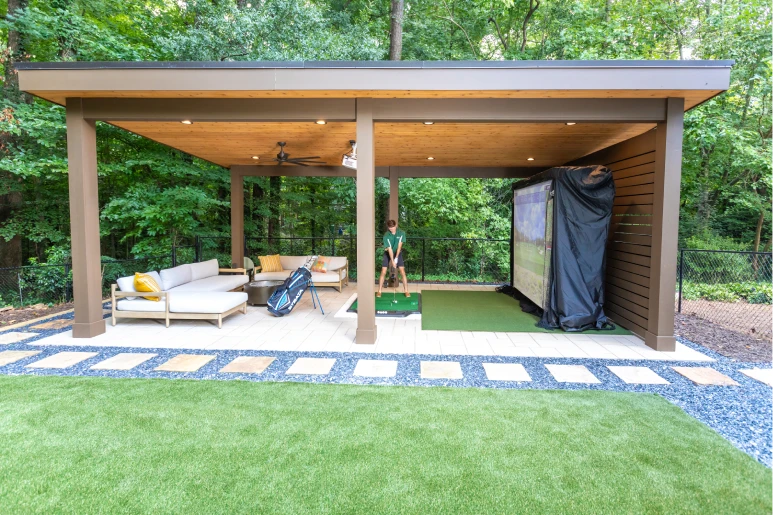
 Holidays on the Patio: Outdoor Entertaining Ideas for Atlanta Homes
Holidays on the Patio: Outdoor Entertaining Ideas for Atlanta Homes A Greener Tomorrow: Eco-Friendly Lawn Treatments for a Sustainable Garden
A Greener Tomorrow: Eco-Friendly Lawn Treatments for a Sustainable Garden How to Incorporate Native Plants for a Low-Maintenance Landscape
How to Incorporate Native Plants for a Low-Maintenance Landscape
LET'S BE SOCIAL: